- info@wildlife-removal.com
Call us for help in your town
Wildlife Removal Education
Attic Insulation Replacement
Need armadillo removal in your hometown? We service over 500 USA locations! Click here to hire us in your town and check prices - updated for year 2020.
If you’ve just managed to remove an unwelcomed, animal houseguest from your attic, you’re probably aware that your task is far from over. Not only are you going to go over every nook and cranny of your home with a magnifying glass to seal up potential entry holes, you’re also going to have to clean up after the little monster. Cleaning up has less to do with feces and urine removal as it does with getting your attic back into shape. After all, it’s likely that your insulation has been chewed, scratched, torn and, yes, even defecated on. Any duct work you have may be in need of replacing, and we’ll hope that the electrical wires have been left alone.
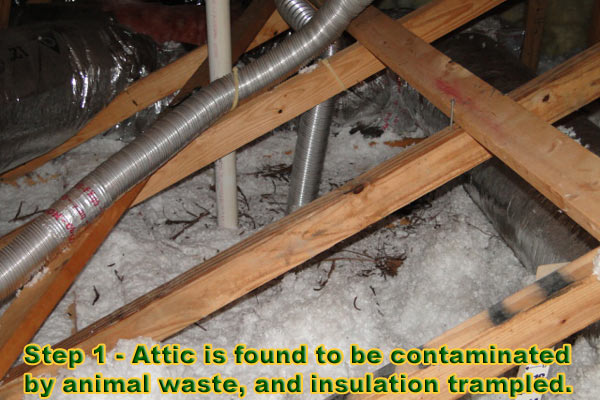
The first step in attic repair is to seal up any tempting crevices that may serves as throne rooms for mice, squirrels, or bats. Sealing up holes does not have to be done with oddly cut pieces of metal or wood nailed haphazardly around your property. Many products are available for the patching of moderate sized holes. Synthetic spray sealants can be applied to a hole and then, once dried, sanded and painted to match the rest of the wall. After all the holes are patched, you can move on to the more important aspects of repairing your attic. Now is the time to check any electrical wires and sockets. Ceiling fans and ceiling lights can be prime spots for pests to frequent due to the amount of warmth present in these locations. Any damaged wiring must be replaced as soon as possible or you put your home and family at the risk for an electrical fire. Duct work must also be repaired if damaged. Inefficient ducts will drive up your energy costs significantly.
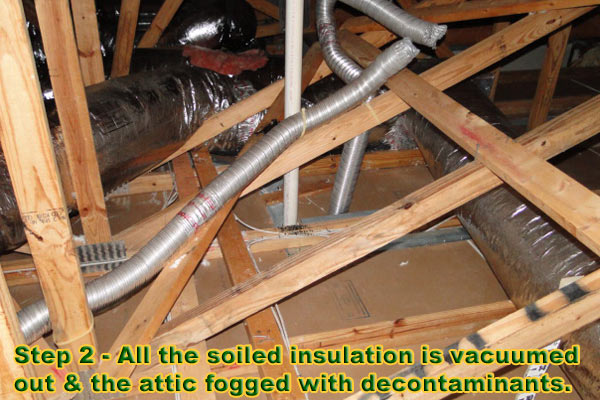
If everything else is in working condition, it is time to turn your attention to your insulation. Because most homeowners don’t know they have a pest problem until it has blown out of proportion, the damage to insulation often warrants its complete removal. If you are replacing insulation in your attic, consider the use of closed cell foam insulation. Closed cell foam insulation is composed of tiny cells filled with a non-combustible gas that helps eliminate noise pollution and helps to completely seal out air and moisture. A type of liquid insulation, spray foam is applied to a surface using a hose with a special application nozzle. Once applied, the foam expands to one hundred times its original size, completely sealing any cracks or pinholes. Closed cell insulation will harden and provide a shell that is moisture-resistant, durable, and energy efficient. Spray foam has a fifty percent better energy efficiency than most comparable products, and will often make you eligible for state energy programs. When it comes to spray foam and pests, the foam is most often comprised of non-nutritional substances, so will have no appeal to burrowing insects. Spray foam is also less enticing to rodents, due to the fact that the foam hardens after application. Most mammalian pests prefer soft, fluffy insulation that will make it easy to create a nest to share with offspring. The fact that foam is unappealing will not protect it from the chewing that occurs, however. Even so, the damage is significantly less than with that of fiberglass insulation. Homeowners with communal bathroom pests, such as flying squirrels, will be grateful they installed a moisture-resistant, hard insulation such as spray foam.
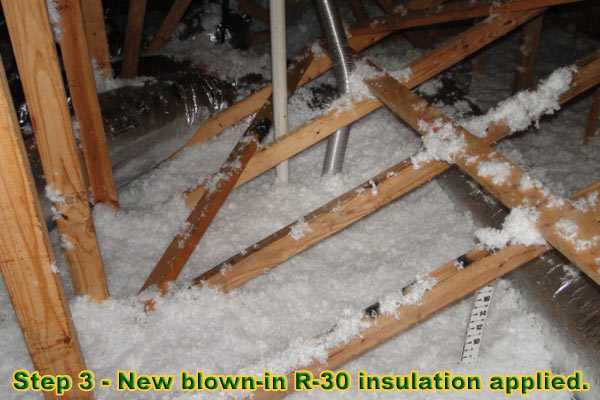
With no available entry holes, properly routed and attached electrical lines, clean and safe outlets, uninjured duct work, and energy efficient insulation, your attic will have fully recovered from its animal invasion. Routine checks of your unused home spaces will ensure pests will no longer be an issue, and will ensure your home is a safe and efficient as it can be.
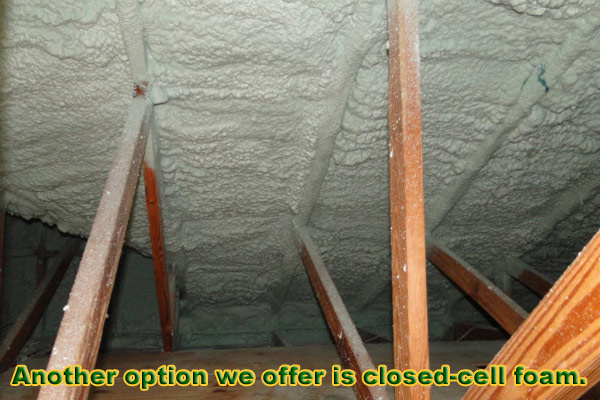
If you need insulation replacement in your home town, click my Directory of Thousands of Wildlife And Attic Insulation Companies. If you need insulation replacement in Fort Lauderdale or Boca Raton Florida, call Patrick of Wildlife Removal Services at 954-903-7117
Can Wild Animals Destroy or Damage Insulation In The Attic?
A number of things will change how much damage wild animals can do when they are left to their own devices, particularly in relatively unused areas of a building, such as the attic. Attic insulation is often one of the biggest concerns, usually because it can be costly to get the entire lot replaced in one go, but this the reality often faced by homeowners when they come up against wild animal invaders. When you have these critters in your home, you need to get rid of everything they could have potentially come in contact with. If you have had animals in the attic, it could mean replacing the entire attic's worth of insulation. That's probably not a job you relish much. Your bank balance won't either.
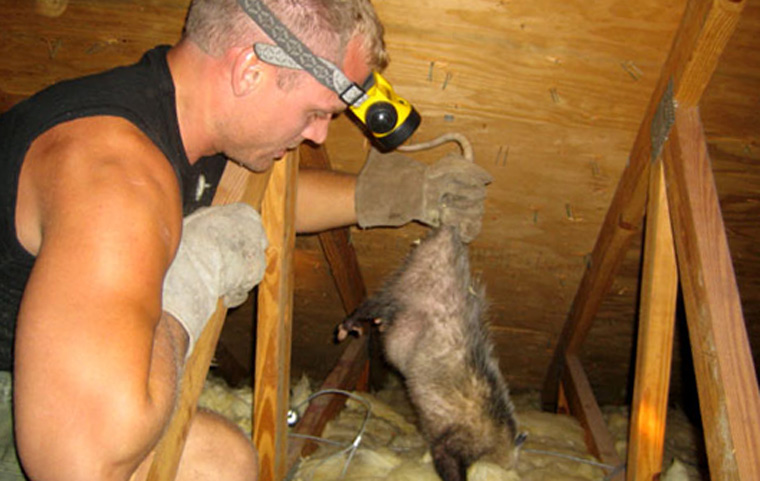
Rats, mice and other animals leave feces and urine all over the place. With rats, it works as a communication method as well as a way to release unwanted stuff from the body. Rats leave pheromones in their urine, and this tells other rats where they should go and how to find food. If rats have been in your attic and left urine on your attic insulation, other rats will be able to smell that. It won't be long before they come flocking.
Of course, alongside the attic insulation potentially working as a form of communication between animals, the fecal matter and urine left behind by the animals is going to affect the insulation. Mold will soon start to grow in areas of damp, and this is a definite worry when you have animals such as raccoons living up there. They often bunch together their waste business, creating latrines. The entire section will be saturated with waste, and mold will grow, as will a nasty stench. And then there’s the disease concern too.
The insulation also adds as a comfortable material to build a bed in too. Mothers will rip it up, tear it up, and re-shape it until it creates a very warm, insulating home to keep eggs or youngsters until they are big enough to brave the world alone. Again, wherever the animals have touched, you'll find the threat of disease.
Wild animals do a lot of damage to attic insulation. Alongside all of these things, there is also a fire hazard to think about. If you were to have a rat infestation in your attic, they could easily chew through electrical cables, and when that comes into contact with the attic insulation material, which is highly flammable, you have a potentially dangerous situation on your hands.
How Can You Remove and Replace Insulation in Your Attic?
Removing and replacing insulation in an attic sounds like a relatively simple task. Sadly, this is often not the case. It’s definitely not the case when you are replacing the insulation because of a wild animal infestation. This often requires the complete replacement of ALL attic insulation, because of the risk of disease and contamination. You will also need to remember that animals will often have moved the insulation around to better suit them and their nesting or wedding needs. When the attic insulation has been moved around, it is no longer doing the job it was intended for — to insulate your attic and, therefore, your home. You will be paying a lot more to heat your home during the colder, winter months when your insulation is in the right place. It could cost you hundreds extra per year on your heating bill.
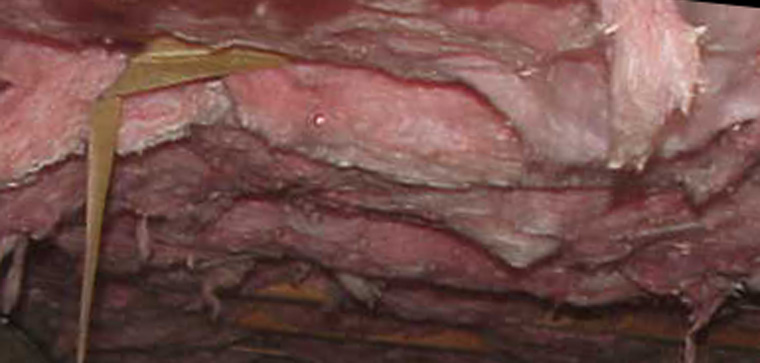
It is said that replacing your attic insulation, depending on materials, will cost about $2-$3 per square foot. You should also allow a little less than this, per square foot, on removal costs too. In some cases, such as when the existing attic insulation is quite old, it might prove beneficial to do this. In other cases, such as when the insulation has only been recently replaced, the cost could be too much. Generally, depending on the material, attic insulation is said to last for approximately twenty to forty years.
If you are removing and replacing batt insulation, you’re quite lucky. This is generally considered the easiest to remove and replaced. You can roll this up, bag it up, and dispose of it relatively easily, before rolling in and then placing the new batt insulation down.
Blown-in insulation, on the other hand, is a tad trickier. You will need a very high-powered vacuum machine in order to remove this, making your cost higher. You must ensure that debris, dirt and the insulation itself is safely and efficiently sucked up, and you MUST wear safety equipment as you are doing it. In fact, it is not actually considered overly safe to complete this as a DIY job. There are a lot of irritants present, such as rock wool and fiberglass. These are not going to be pleasant for you if you inhale them.
We would always recommend that you hire in a professional to replace and remove your attic insulation, especially if you are doing so as a result of a wild animal invasion.
Go back to the Wildlife Removal home page.


















